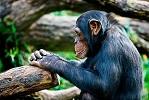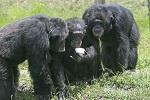Evolution is the process responsible for the genotypic and phenotypic changes which are seen in populations over subsequent generations. These changes are a result of variation in inherited characteristics.
Diversity can occur at all levels in a biological organism, from the basic DNA level to the species level. It is this diversity which has changed and become more complex over time. When life on Earth first arose, it was composed of very primitive life forms and the complexity and biodiversity which exists today has expanded greatly due to evolution.
The theory of evolution is based on natural selection, a principle that was discussed by Charles Darwin almost 150 years ago. This process of natural selection requires there to be phenotypic variation within populations. In natural populations variation arises often, due to processes such as mutations and this variation which is represented by traits gets inherited over subsequent generations. Evolution is also dependent on traits being heritable. The success of individuals in terms of reproduction and survival vary because of the specific traits they possess.
Evolution has influenced every aspect of organisms; their behaviour, morphology and physiology. Stressful conditions or environmental changes will force organisms to find ways to adapt to altering conditions. The process of adaptation is influenced by evolution because through natural selection the most beneficial traits for survival will be selected for and deleterious traits will slowly get removed as individuals possessing those traits will not be able to survive.
Evolution is not a theory about the origin of life, but a theory about how life diversified after its origin. Furthermore, evolution is not a ladder of progress, rather it is a process in which fitness is linked to the environment and organisms are created to be able to reproduce and survive. Evolution by natural selection is not a process dependent on chance because those traits which are most common today are those which originated from the predecessors who were best able to ensure their reproduction and survival.
© BrainMass Inc. brainmass.com June 28, 2024, 3:34 pm ad1c9bdddf

